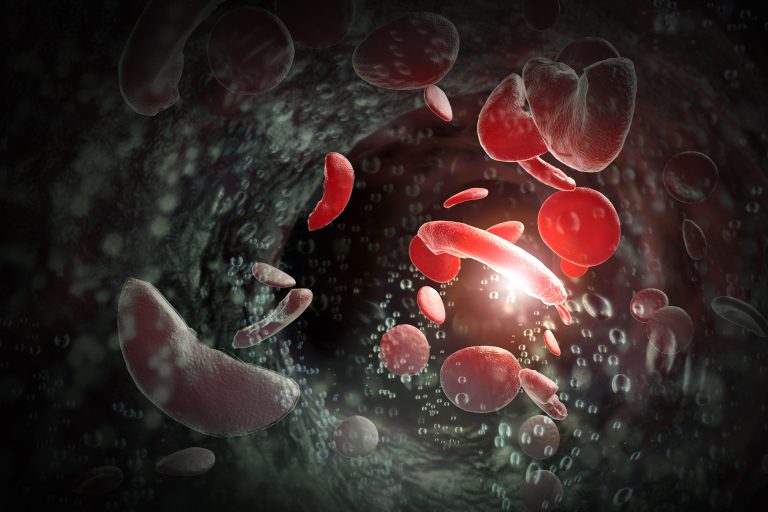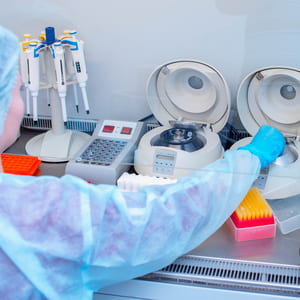Cell and gene therapy are fields within biomedical research that offer promising avenues for treating and potentially curing a wide range of diseases, including genetic disorders, certain types of cancer, and some viral infections. These therapies address disease at the level of individual cells and DNA, offering precision treatments with the potential to rectify the underlying causes of illnesses.
The essence of cell therapy
At its core, cell therapy involves the transplantation of living cells into a patient for therapeutic purposes. These cells can be derived from the patient themselves (autologous cells) or from a donor (allogeneic cells). The primary aim of cell therapy is to replace or repair damaged tissue and restore normal function. There are various types of cell therapies currently being used or in development, including:
– Stem Cell Therapy: Stem cells have the unique ability to develop into many different cell types in the body, and as such, they can potentially regenerate damaged tissue. Bone marrow transplants are a common form of stem cell therapy, often used in the treatment of leukemia and lymphoma.
– Immune Cell Therapy: This involves modifying a patient’s immune cells to target and destroy cancer cells. A well-known example is CAR-T cell therapy, where T cells are engineered to express a chimeric antigen receptor (CAR) that specifically binds to cancer cells, leading to their destruction.
– Regenerative Medicine: This therapy aims to restore organ and tissue function for conditions where the body’s own responses do not suffice. This can include the generation of skin grafts for burn victims or creating insulin-producing cells for people with diabetes.
The innovations of gene therapy
Gene therapy refers to the direct modification of an individual’s DNA to treat or prevent disease. This can be achieved by inserting, editing, or removing genes within a person’s cells. The main strategies involved in gene therapy include:
– Gene Replacement Therapy: This technique involves introducing a healthy copy of a defective gene into the patient’s cells. It is particularly useful for treating single-gene disorders like cystic fibrosis or sickle cell disease.
– Gene Silencing Therapy: Used in situations where a gene is overactive or abnormal, this method silences the specific gene to reduce or eliminate the production of a harmful protein.
– Gene Editing: With the advent of CRISPR-Cas9 and other gene-editing technologies, it is now possible to precisely alter sections of DNA within cells. This could correct mutations at their source and offers incredible promise for a broad spectrum of genetic diseases.

Promise and Prognosis
Cell and gene therapy represent a frontier in medical science, with the potential to bring transformative treatments to patients suffering from diseases that were once deemed intractable. While these therapies can provide profound benefits, they are accompanied by ethical considerations, regulatory hurdles, and technical challenges. Ensuring safety, determining long-term effects, and making treatments accessible and affordable are among the top priorities
The difference between cell therapy and gene therapy
While both cell and gene therapies are cutting edge, the distinction between them is clear. Cell therapy involves the direct use of cells to restore tissue function or to fight disease, with stem cells playing a significant role. Gene therapy, however, deals with the genetic level—altering the patient’s DNA to tackle genetic disorders. The two therapies, although distinct, sometimes overlap when gene therapy is used to modify cells before they are used in cell therapy.
Examples of cell and gene therapy
Cell therapy involves the transplantation of human cells to replace or repair damaged tissue and/or cells. With a variety of cells from different parts of the body, researchers have developed several treatments to restore lost functions.
Hematopoietic Stem Cell Transplantation (HSCT), for instance, is one of the most widely recognized forms of cell therapy. Used primarily for treating conditions such as leukemia and lymphoma, HSCT involves the intravenous infusion of stem cells to re-establish hematopoietic function in patients whose bone marrow or immune system is damaged or defective. The stem cells can come from the patient’s bone marrow (autologous transplant), a donor (allogeneic transplant), or umbilical cord blood.
Chondrocyte Transplantation is another pioneering therapy aimed at healing cartilage injuries, which are notoriously difficult to mend due to the avascular nature of cartilage. This modality, known as Autologous Chondrocyte Implantation (ACI), takes healthy cartilage cells from the patient, grows them in a lab, and then implants them into the damaged area to promote regrowth of cartilage.
Skin Cell Grafts represent a critical advancement in treating burn victims. Researchers create these grafts by harvesting a patient’s own skin cells and then cultivating them in a laboratory to create a larger skin patch. This patch can then be grafted back onto the burn site, promoting healing and reducing the risk of infection and scarring.
Gene Therapy: correcting disease at its root
Gene therapy represents a revolutionary approach by which to treat, and potentially cure, diseases caused by genetic abnormalities. By delivering a healthy copy of a gene or a new gene to cells, medical scientists aim to correct the underlying genetic cause of a disease.
Viral Vector Gene Therapies use modified viruses to deliver corrected genes into patient’s cells. One celebrated example of this technology is the treatment for Spinal Muscular Atrophy (SMA), a motor neuron disease. The therapy, named Onasemnogene Abeparvovec, involves a one-time infusion that introduces a fully functional gene to replace the defective one that causes SMA.
CRISPR/Cas9 Gene Editing has emerged as a groundbreaking tool in gene therapy. It allows scientists to precisely cut out mutations at specific DNA sequences and replace them with healthy copies. This could have applications across a wide array of diseases, including the treatment of certain blood disorders like sickle cell anemia and β-thalassemia, with ongoing clinical trials showing promising results.
Who can benefit from Cell and Gene Therapy treatments?
As the boundaries of medical science are pushed further, cell and gene therapies are emerging as revolutionary treatment modalities that have the potential to alter the very course of previously untreatable diseases. When exploring who stands to benefit the most from these cutting-edge treatments, several key demographics come to the fore, promising hope where once there was little.
Patients with genetic disorders
A primary cohort that can see transformative benefits from gene therapies are individuals with genetic disorders. Traditionally, these conditions have had limited treatment options, often focusing on symptom management rather than addressing the underlying cause. Gene therapy offers an unprecedented opportunity to correct genetic defects at their origin. For instance, patients afflicted with diseases such as cystic fibrosis, Duchenne muscular dystrophy, or sickle cell anaemia may experience improved outcomes as gene therapy aims to replace or repair the faulty genes responsible for their conditions.
Oncology patients
In the domain of oncology, patients confronted with various forms of cancer are witnessing a new dawn with cell therapy. One of the most promising treatments in this area is CAR-T (Chimeric Antigen Receptor T-cells) cell therapy. By genetically reprogramming a patient’s T-cells to attack cancer cells, those with certain types of blood cancers like leukemia and lymphoma are offered a personalised and potentially life-saving treatment option. As research progresses, the scope of cell therapy is expanding, with the potential to target solid tumours as well.
Those suffering from rare diseases
Rare diseases often suffer from a lack of dedicated treatments due to their low prevalence, which makes the development of traditional medications less economically viable for pharmaceutical companies. However, cell and gene therapies can be particularly suited for rare disease patients because these therapies can be customised to treat the specific molecular dysfunctions present in each condition, irrespective of its rarity.
Individuals with autoimmune diseases
Emerging applications of cell and gene therapies are also depicted in the realm of autoimmune diseases. This group of disorders, where the immune system erroneously attacks the body’s own tissues, encompasses conditions such as rheumatoid arthritis, type 1 diabetes, and multiple sclerosis. Gene editing tools like CRISPR/Cas9 offer a new frontier in reprogramming the immune responses, potentially leading to enduring remissions or even cures.
Paediatric patients
Children with certain inborn errors of metabolism or paediatric cancers are also among the beneficiaries of the advanced therapies. Newborn screening can identify some high-risk candidates for early intervention with gene therapy, potentially averting irreversible damage and allowing these children to lead healthier lives.
It is important to note that while the promise of cell and gene therapies is immense, these treatments do generally come with high costs and potential risks. Access to such treatments can be limited, and long-term efficacy and safety data are still being accrued. Nonetheless, the wheels of innovation continue to turn, bringing with them the hope of.

What is the role of clinical trials in Cell Therapy?
Clinical trials are a pivotal component in the developmental journey of cell therapies, serving as the critical bridge between laboratory research and the introduction of new treatments to the patient community. These trials are meticulously designed to answer specific research questions, adhere to stringent regulatory standards, and ensure that any new therapy is both safe and effective before it can be approved for widespread use.
Essential purposes of clinical trials in Cell Therapy
1. Safety Assessment (Phase I Trials):
The primary focus of early-phase clinical trials, particularly Phase I, is to evaluate the safety profile of a cell therapy. During this stage, a small group of participants, often those with no other treatment options available, are selected to receive the therapy. Researchers meticulously monitor these participants for any adverse reactions to establish a safe dosage range and to identify any potential side effects.
2. Efficacy Determination (Phase II and III Trials):
Once a cell therapy is confirmed to be safe, subsequent trials shift towards assessing its efficacy. In Phase II, a larger group of patients receives the therapy to provide preliminary data on its effectiveness, while Phase III trials involve an even more extensive patient population to confirm the therapeutic benefit and monitor for any less common side effects. This data is essential for demonstrating that the therapy can achieve its intended purpose in a clinical setting.
3. Comparative Analysis (Phase III Trials):
During Phase III trials, the new cell therapy is often compared against standard treatments. Such comparisons can help determine if the new therapy offers any advantages, such as improved outcomes or fewer side effects. It is not uncommon for these trials to be randomized and double-blinded to provide the most unbiased and reliable data possible.
4. Long-Term Evaluations (Phase IV Trials):
Post-approval, or Phase IV trials, are conducted after a cell therapy has been permitted for public use. These trials are designed to monitor the long-term safety and effectiveness of the therapy and to identify any rare adverse events that may only emerge with widespread use over an extended period.
The methodical approach to clinical trials
The methodology behind each clinical trial must be rigorous to deliver credible and legally defensible data. Firstly, a detailed protocol is developed that outlines the study’s aims, the number of participants required, the treatment procedures, the duration, and the parameters for assessing outcomes. This protocol acts as a blueprint, guiding every step of the clinical trial process.
Participants are typically selected in accordance with strict inclusion and exclusion criteria to ensure that the results are representative and to minimize risks. As the trial progresses, data is collected and analyzed in accordance with Good Clinical Practice (GCP) guidelines, which are international ethical and scientific standards for conducting clinical trials.
Regulatory agencies, such as the European Medicines Agency (EMA) in the EU, or the Food and Drug Administration (FDA) in the United States, scrutinize every phase of the clinical trials. These agencies must approve the trial’s commencement,
Gene Therapy: a revolutionary player in clinical trials
Gene therapy is often heralded as one of the most promising areas of modern medicine, offering potential cures for a plethora of heretofore intractable diseases. It is a revolutionary approach that involves the delivery of nucleic acids into patients’ cells, with the primary goal of treating, and in some cases curing, genetic disorders.
At its core, gene therapy serves to correct or replace defective genes, thus providing a long-term solution to many genetic diseases such as muscular dystrophy, cystic fibrosis, and certain types of cancer. Unlike traditional therapies that typically treat symptoms, gene therapy targets the root cause of the disease, which lies in the genetic blueprint of the individual.
The clinical trial landscape
Groundbreaking clinical trials for gene therapy are underway across the globe, with many already demonstrating profound and life-altering results. Clinical trials are absolutely crucial in this field – they’re the bridges connecting laboratory breakthroughs to bedside treatments. Each trial, governed by stringent regulatory standards, is meticulously designed to evaluate the safety and efficacy of these novel therapies.
In a recent surge of innovation, researchers have seen success with gene therapies in treating rare genetic eye disorders, which were once deemed incurable. Similarly, life-changing progress has been reported in the realm of haemophilia, a bleeding disorder that previously necessitated frequent and costly traditional treatments.
Summary about cell and gene therapy
In conclusion, the advancements in cell and gene therapy are reshaping the clinical trial landscape, heralding a new era of medical possibilities. The successes in addressing rare genetic eye disorders exemplify the transformative potential these therapies hold, offering hope where conventional treatments fell short. Furthermore, the substantial strides made in haematology, particularly for haemophilia patients, underscore the life-altering benefits of innovative gene therapies.
As researchers continue to unlock new frontiers of medicine, cell and gene therapy stand at the forefront of a revolution in healthcare, promising a future where once-intractable conditions are met with effective and enduring solutions. Stay tuned to explore how these scientific breakthroughs are impacting the development and approval of new treatments, and how they may alter the fabric of healthcare for generations to come.




























